By Chitra Sharma
MAA writer
I came across the #5WomenArtists campaign in 2018 when I was in New York, attending a friend's exhibition opening. Started by the National Museum of Women in the Arts, the campaign "calls attention to the fact that women have not been treated equally in the art world, and today they remain dramatically underrepresented."
To show support for the campaign, and to commemorate March as Women's History Month, I sat down with five MAA members from diverse backgrounds to ask them five questions about their art, process, and the contributions of women in art.
We met at the coffeehouse Sunday Morning Bakehouse in Bethesda. It was a chilly afternoon, but the entertaining conversation kept us warm ... and yes, the delicious coffee also played an important part!
Conversation flowed easily from creative processes to selling on Instagram. One line that stuck with me for a long time was from Shelley Dane: “Crafters are also artists,” which we often overlook.
This was the reason why I choose diverse artists: mosaic artist Shelley Dane, abstract painter Martina Sestakova, sculptor Pearl Chang, painter Hiral Joshi, and fabric artist Joanna Horrar.
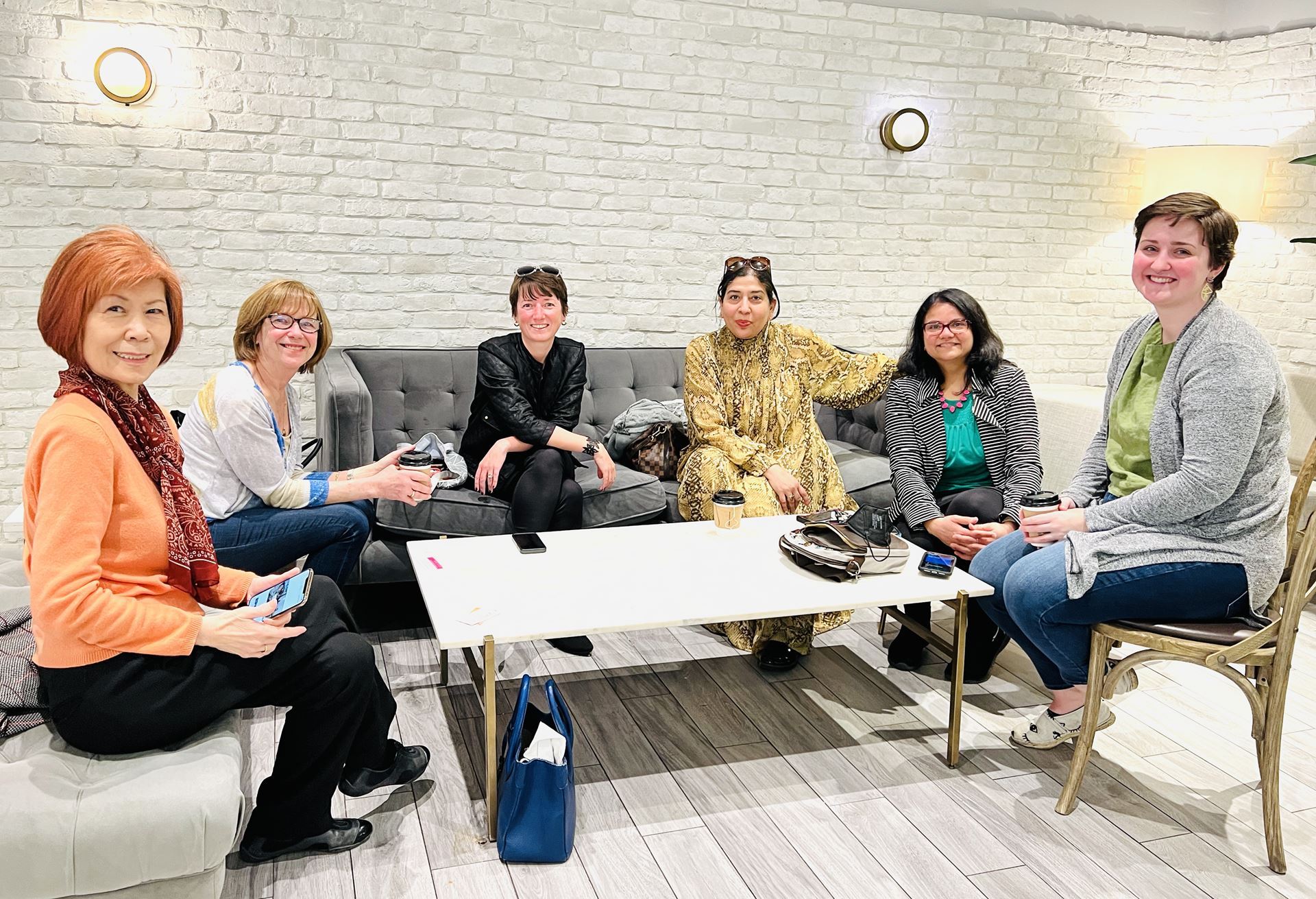
From left: Pearl Chang, Shelley Dane, Martina Sestakova, Chitra Sharma, Hiral Joshi, and Joanna Horrar at Sunday Morning Bakehouse in North Bethesda, Maryland.
Q: What made you choose art as a career? Did anyone ever discourage you from pursuing arts?
Shelley: I started dancing as a teenager and continued that pursuit through college. After meeting my husband in 1988, his career took us abroad and I volunteered as a choreographer and teacher for the American International School of Bucharest. It was there, in the basement-turned-pottery studio of a friend that I learned the art of mosaics from a Romanian artist. I immediately fell in love with the art form. Upon returning to Bethesda in 2005, I started creating heirloom mosaics as gifts using broken teacups from my grandmother. No one ever discouraged me from pursuing a life as an artist.
Joanna: I didn’t gain an interest in art until about 5 years ago. I needed a creative outlet in early motherhood. I began exploring what art was to me and very quickly became interested in fiber art and specifically embroidery. Recently I have been exploring mixed media acrylic and embroidery.
I was discouraged from art my entire life, mostly by my mother. She pushed me toward “money-making” subjects and said that art was not worth doing. It’s been difficult to overcome that now as someone getting into art in adulthood. I do think it’s really helped me appreciate art as a process though, and I see everything as art.
Pearl: I have always loved art but never had a chance to pursue my interests when I was growing up. The educational system in Taiwan was so demanding that we were loaded with homework every day. Besides, my parents didn’t quite have the means to pay for private art lessons outside of the school curriculum.
In graduate school as a foreign student, my focus was always on being employable. Over the years, with a career with the federal government and raising a family, art remained to be an interest on the sidelines until after retirement. And my husband, as well as my entire family, have always been my most ardent cheerleaders from the beginning of my second career.

Q: What kind of space do you want to carve out for yourself as a woman in the art industry? What is your creative process like?
Martina: While I have some formal art education, I am mostly self-taught, and I believe that’s helping me immensely in my creative practice and my working with others. Curiosity, kindness, encouragement: I incorporate these in my work as I have needed them myself in my journey. My creative process is a meditative journey for me. I lift words or snippets of text out of books and they become titles of my abstract explorations. I work in acrylic inks and watercolors on Yupo, a cool medium from Japan. I ponder what the title—a word—looks like as colors, shapes, textures, movement, and energy.
Shelley: I grew up thinking I was a crafter or "maker." I collaged furniture, sewed quilted placemats and napkins, and did several other crafty endeavors. I always looked at mosaics as a "craft."
What I have come to learn is that all crafts are art, and all makers are artists. My creative process starts long before I ever start to make a tray. Everywhere I go, I imagine the scene I'm looking at as a possible tray. I have even started making mosaic trays out of black-eyed peas, red kidney beans, lentils coffee beans, and other legumes!
Pearl: I’m mostly interested in doing the kind of sculptures that are representational of my personal experiences and the social concerns of contemporary women. I want my work to be relatable, considered, and enjoyable.
I get the ideas for my sculptures from the people I come in touch with, like family, friends, or even strangers that I encountered by chance. A single point of view or often multiple views can find their way into one sculpture. I collect images and ideas over time and then find a medium to integrate them into one sculpture when I can pull it off.
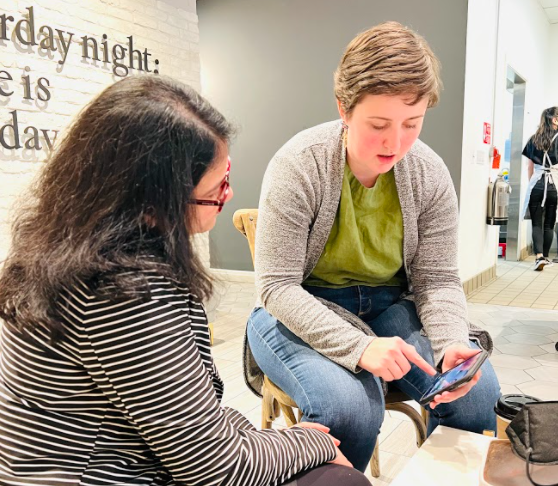
Q: Why do you think there are no women artists as well-known as da Vinci or Michelangelo?
Joanna: I think it goes back to a “woman’s place” being in the home, and the domestic arts not seen as skilled or as valued as the great artists. Men were given the freedom to create art simply for art’s sake, and women were encouraged otherwise. We’ve always been there though, painting, drawing, needlework, and I think now we’re allowing women to rise in these spaces.
Martina: I assume that since women have been historically put into the supportive/caregiving roles within society, we just don’t know them as independently creative artists. Currently, there seems to be an effort to bring women of history—and of the present—to the foreground. I teach art classes and often research art history to find a female artist unknown to me and my students.
Hiral: The answer lies not in our stars, our hormones, our menstrual cycles, or our empty internal spaces, but our institutions and education. During that time, women were kept away from achieving greatness or denied getting recognized. There were more specific gender-related reasons at work that stopped them from reaching their full potential.
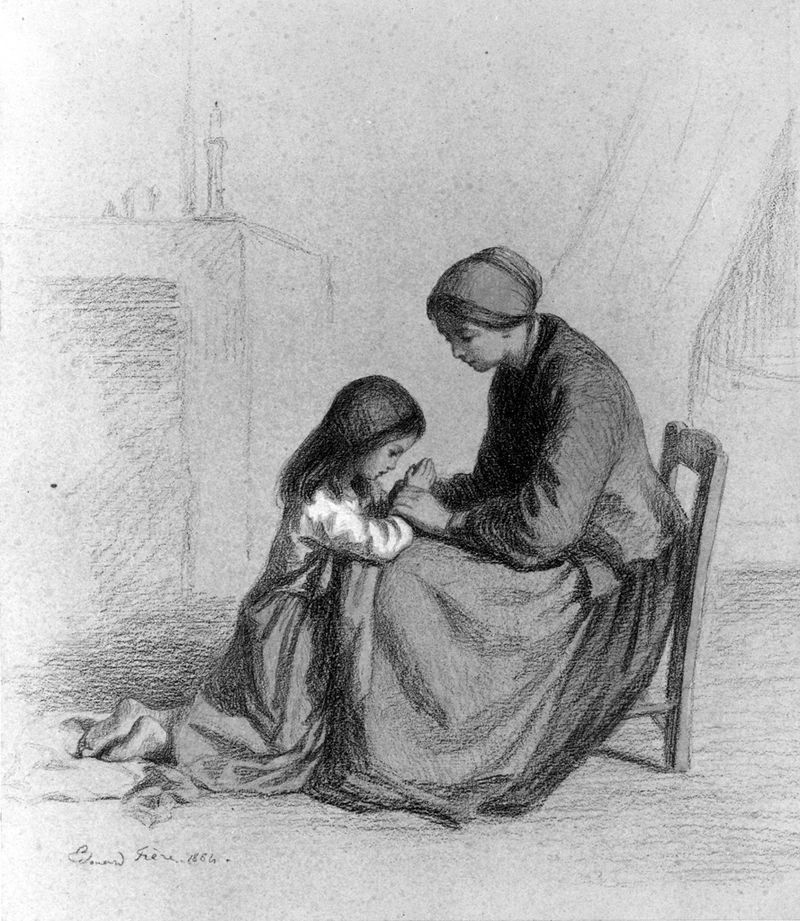
Child Praying at Mother's Knee, depicting the typical role of women in the household. Drawing by Pierre-Edouard Frere (1864).
Q: Which five women artists do you find inspiring?
Shelley: Women artists who inspired me: One, my mother. I have three of her paintings hanging in my house and smile every time I walk past them. Two and three: Isadora Duncan and Martha Graham. Both of these incredible artists were instrumental in the evolution of modern dance. And my friend, Courtney Severe. Her career was never her art, but it shaped her life in so many ways. The fifth is myself, in the future!
Joanna: Sarah Horrar, a fine artist in Louisville, Kentucky, and my sister-in-law. She is my biggest encouragement and I’ve learned so much from her. Aftyn Shah of Rise and Wander (printmaker), Jessica So Ren Tang (embroidery artist) and Allie Maree (fiber and illustration). And Sarah K. Benning, from whom I first saw that embroidery doesn’t have to mean fabric in a hoop.
Pearl: Barbara Hepworth, Camille Claudel, Frida Kahlo, Mary Cassatt, and Georgia O'Keefe.
Hiral: Frida Kahlo, B Prabha (India), Bridget Riley (UK) for her op art, Chris Cozen (LA) and Flora Bowley (Bali).
Martina: I enjoy the works of Elaine de Kooning, Marie Laurencin, and Alma Thomas. Locally, my neighbor Jennifer Beaudet, a fellow MAA member, is a lovely person and a great artist. I have truly enjoyed following her creative journey. And my cousin, who is an art therapist in the Czech Republic, always shows me a new point of view, and I enjoy her artworks.
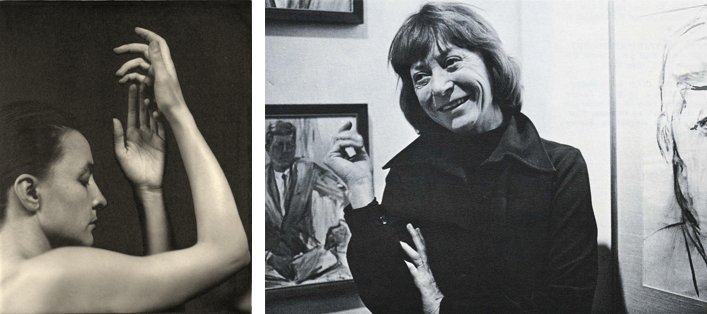
Left: Georgia O'Keefe, as photographed by Alfred Stielitz in 1920. Right: Elaine De Kooning in 1974.
Q: What is the one thing that you would change in your community to help the development of art?
Martina: I am fortunate to live in an area that has a lot of artists. The DMV has a lot of opportunities and if I look at my town, Kensington, Maryland, I see a lot of cool places where women can gather, share, and create art. I think it’s essential to seek our artists in your town: Get to know them and support them.
Pearl: I would love to see more support and sponsorship for local art communities from the business world. Their financial support of the visual arts will likely inspire the development of more innovative art projects and therefore more awareness and participation within the community.
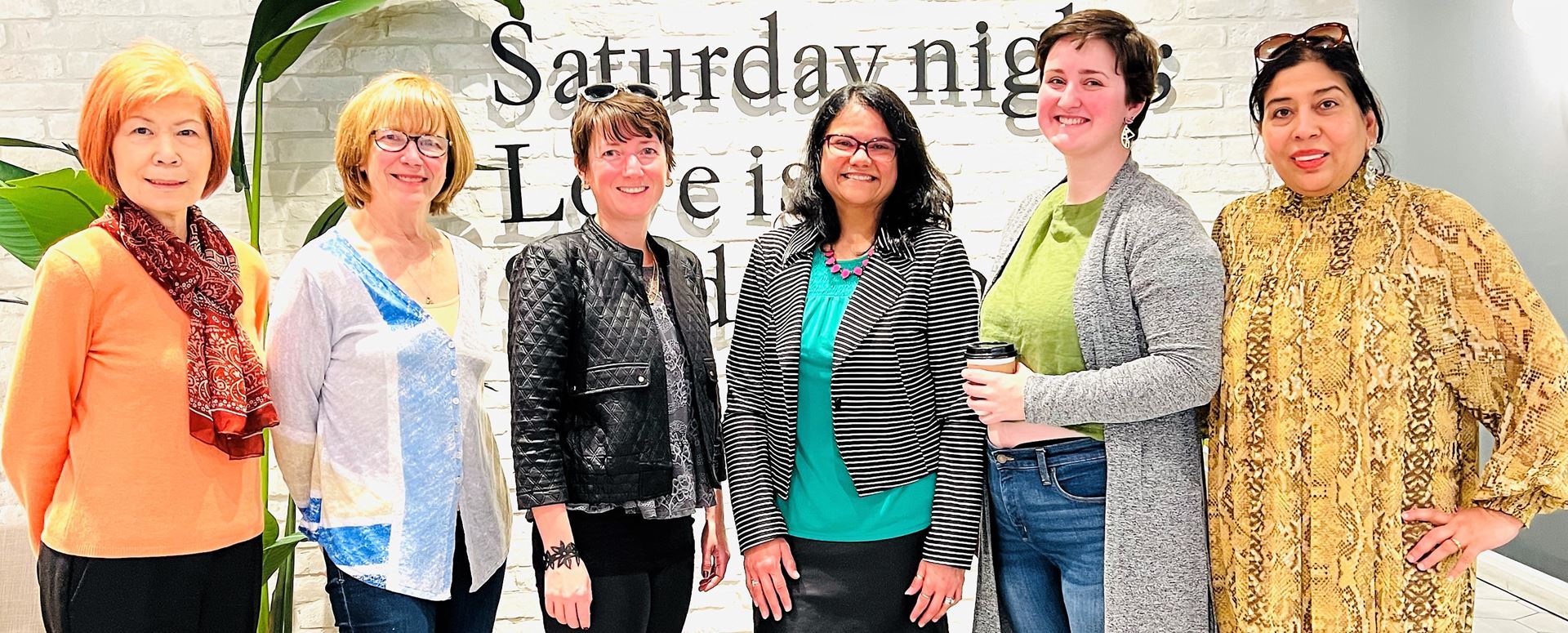
Thank you to our artists and to Chitra Sharma for this interview and photos.
© 2025 Montgomery Art Association Inc., PO Box 2154, Kensington, MD 20891
© 2025 Montgomery Art Association Inc., PO Box 2154, Kensington, MD 20891